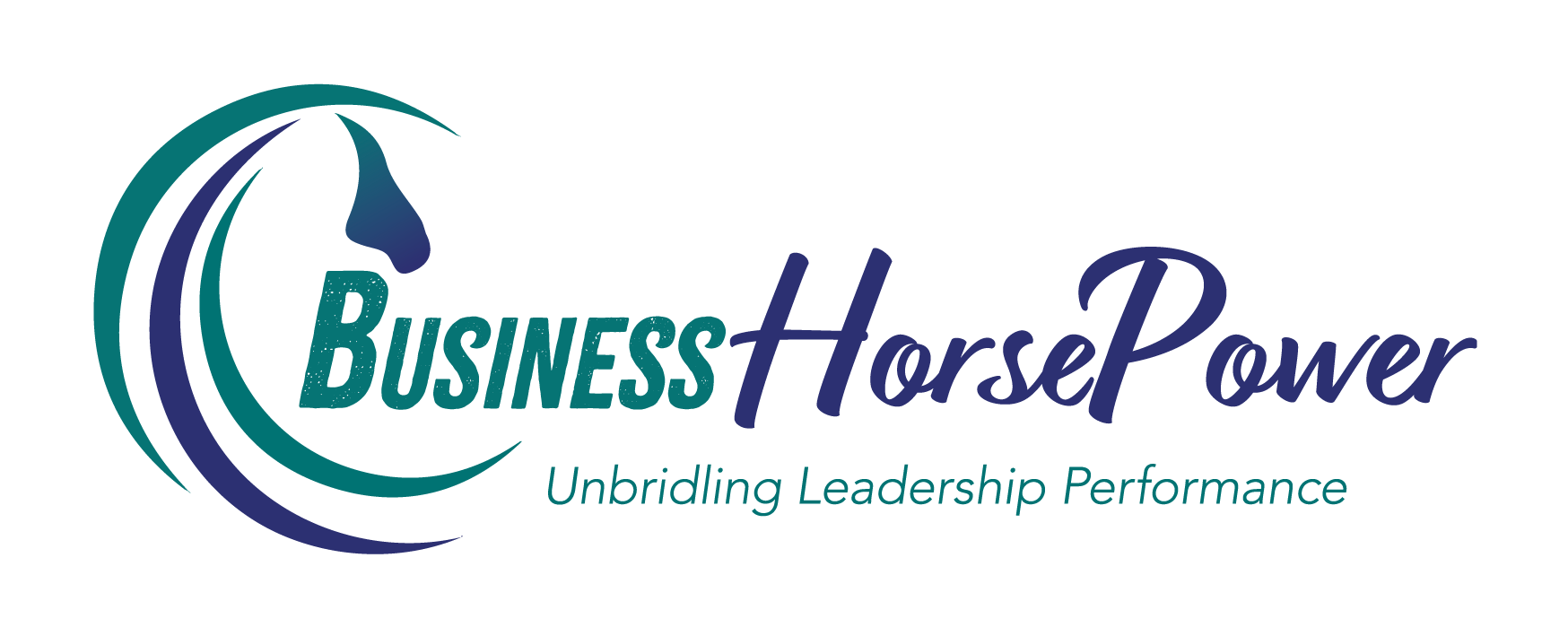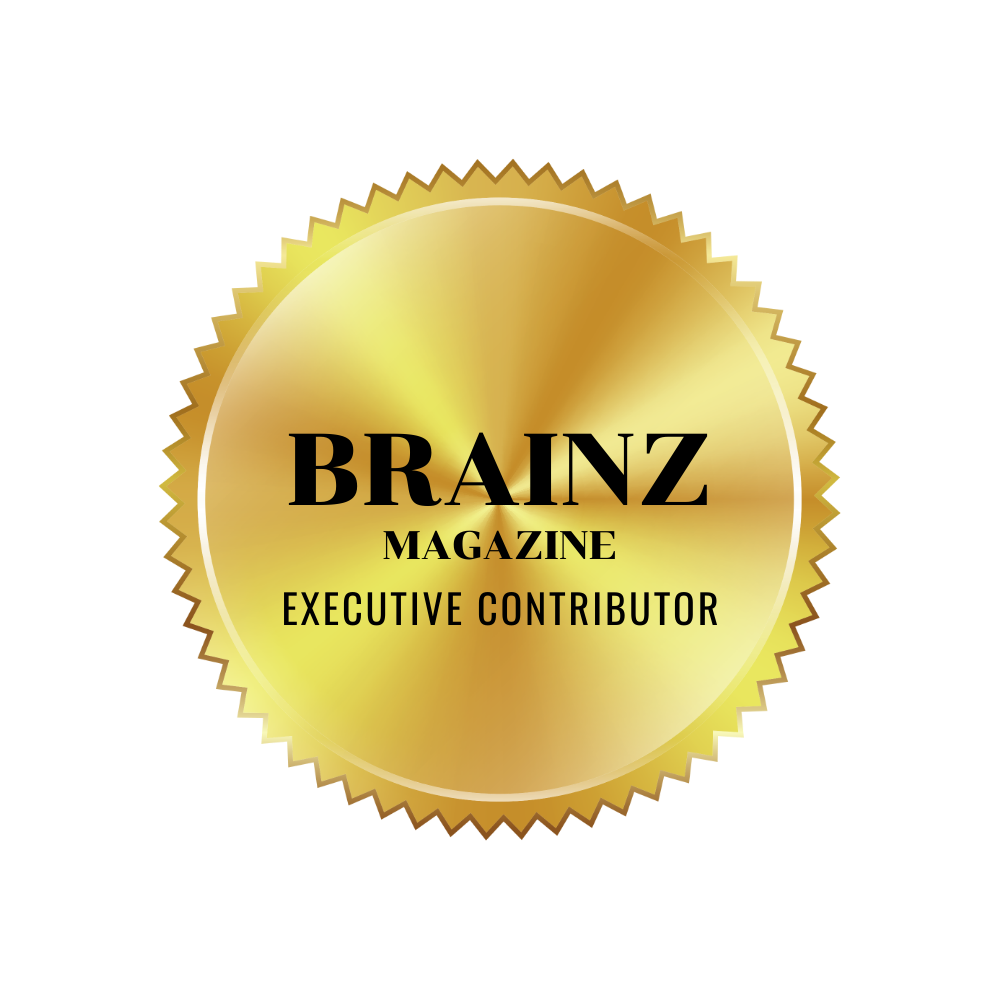
by Julia Felton | Jan 2, 2016
Would you ever turn on a tap and then let the water run away and not capture it? What a waste of water that would be. And yet is what I see happening in business day in day out, however, its not water leaking but rather resources – particularly time, energy and money.
Yes, most businesses waste thousands and thousands of pounds very year because they are engaging in activities that are not joined up. In other words one activity does not lead to another because the systems are not Joined Up.
So how do you know if your systems are Joined Up? Well the best way is to ensure that you measure every aspect of the business. As Peter Drucker says “If you can’t measure it, you can’t improve it.”
When you think about this quote, it should immediately become apparent how true it is. Because, if you can’t measure something, and know the results, you can’t possibly get better at it. For example, it’s nearly impossible to lose weight without stepping on a scale once in a while to measure your results – if you don’t, you have no idea if you are succeeding or not.
Now as some of you know I have recently taken up running and tracking my performance on a daily basis has become a habit. I now have a record of how far I have been running and how fast I have been going. Without this information I’m sure I wouldn’t have been able to acknowledge the progress I have made.
Now, in business, Drucker’s quote is particularly true. If you can’t measure every part of your business, you can’t manage or grow it.
For example
- Do you know the number of new website visitors you received in the last 30 days?
- And do you know what percentage of them turned into new paying customers?
- And do you know how the level of satisfaction among your customers has fluctuated over time?
- And do you know the precise average lifetime value of your customers?
There are nearly 50 questions such as these that measure each aspect of your business and I list a selection of these in the resources section my book Unbridled Success.
And if you don’t know the answers, if you can’t measure them, then you can’t possibly manage or improve them and know if your systems are Joined Up. And unless you can identify where you are wasting resources you can never improve performance.
So I encourage you to look at your business and examine where you might be wasting resources. Putting in simple tracking systems (or business intelligence systems) is the best way i know to help keep you focused on what is a priority in your business. Without business metrics you might as well be driving (or riding) blind, with no visibility of what is really going on.
And if you need any help in putting business metrics in your business then please connect with me for an Unleash Your Business Potential Strategy Session, and I’ll help identify one action you can take right now to start you getting your systems Joined Up.
p 13 Chaos to Coheranec

by Julia Felton | Jan 1, 2016
I can’t believe that the end 2015 is nearly here. Wow how fast did the year go.
Take a moment to celebrate all the successes that you had. I know you had loads, but all too often we get to the end of the year and just reflect on what we didn’t achieve.
I know this happened to me recently. I looked at my goals and felt like I had failed but then I took a moment to review all my great accomplishments during 2015. These included launching my new book The Alchemy of Change, travelling to Norway, the Czech Republic, Germany and Bali to deliver workshops and speak at events, re-branding my business, participating in the Professional Speakers Association competition, delivering my first live stand up comedy performance in Leeds, as well as running a number of leadership days with horses.
So no, I didn’t achieve my BHAG goal of delivering a TED talk but that gives me something to strive for in 2016!
And thinking of 2016, what do you plan on achieving? Use the next few days to envision what you want to happen in 2016. Maybe even create a Vision Board – I’m doing mine tomorrow – so you can see what you desire. Remember you create your destiny so decide what you want 2016 to look like. Because only if you dream and vision what you want can then the Universe support you achieving these goals.
Remember:
Clarity + Certainty gives you Opportunity + Choice
so go ahead and plan for an amazing 2016.
I wish you all a very prosperous New Year and speak to you again next week.
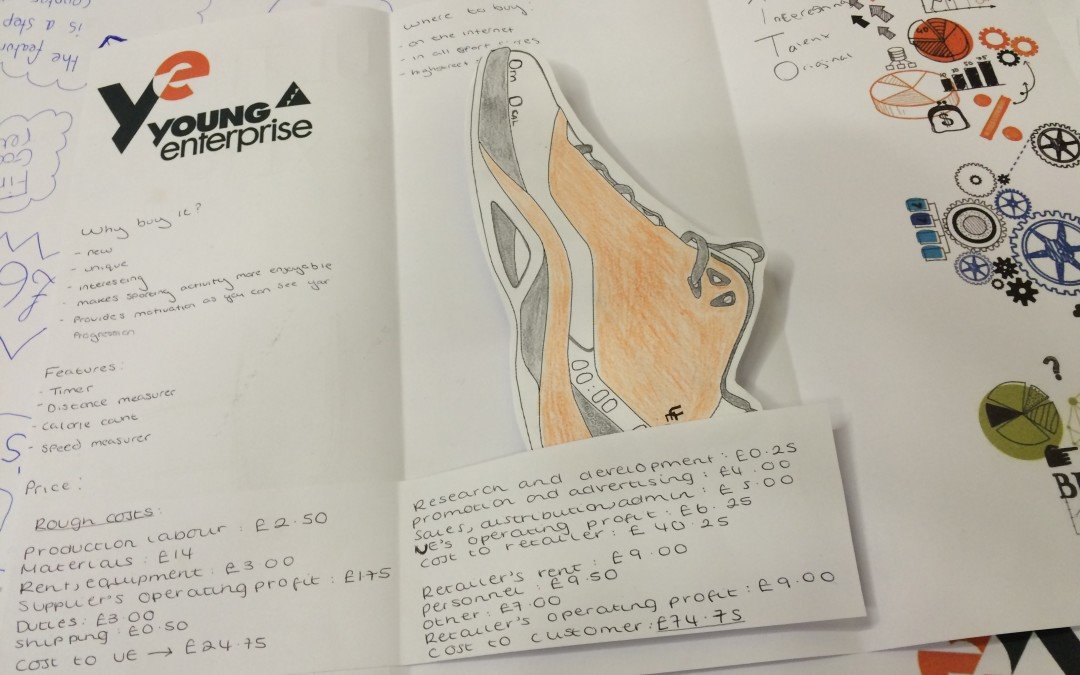
by Julia Felton | Dec 28, 2015
I often talk about how viewing a situation from a different perspective yields different results and once again this has proved to be so true.
Earlier this year I became a mentor for Young Enterprise which is a charity dedicated to helping develop the entrepreneurial flair in young people. Every Thursday for the last three months I have been spending time at a local school helping a group of 20 teenagers set up their own business.
What has been inspiring to me if the fact that these young people have no fear. They are not constrained by rules but rather play full out assuming everything is possible and achievable. The business ideas they have come up with are innovative, challenging and just plan do-able. I often have to check myself before I speak just because I think the venture won’t work isn’t necessarily true.
These young people are ambitious, enthusiastic, hard working and see endless possibilities around them. It always makes me think about what opportunities I am missing by not having the foresight that they have. They are forcing me to re-think the way I see the world and the lenses I am using to filter information.
The relationship I have with these students is definitely a win-win. So my question today is are all your relationships win-win. If not then maybe it is time to release some of them and find relationships that truly serve you. Just email me or post it on the Facebook page.
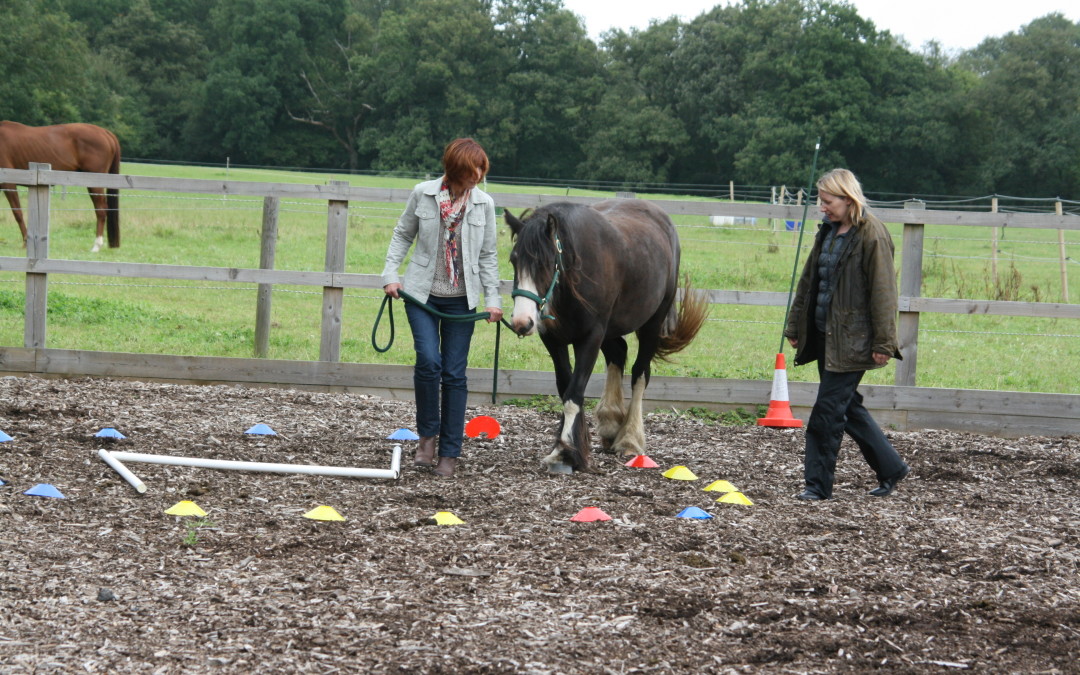
by Julia Felton | Dec 13, 2015
In a recent Fastcompany article 6 Ways Work Will Change In 2016 the author examines the traits that leaders will need for 2016. Specifically it cites:
“Leaders have traditionally been selected based on experience and company loyalty, but those leading today’s biggest organizations aren’t necessarily those who have spent the most time climbing the corporate latter. That’s because the very nature of management has drastically changed in recent years, resulting in a new set of expectations for those at the top.”
Furthermore Josh Bersin of Deloitte notes that “Most companies, even big companies, are much less hierarchical and much less top-down in their execution than they used to be. Leaders are finding that they have to be more inspirational, they have to be more collaborative……. the gap that’s being created is, ‘Who are the right leaders?”
So how do companies develop leaders for the next year who are more inspiring and collaborative?
I address this issue in my book The Alchemy of Change and this is what I say:
“I do suggest that all my clients engage in learning leadership from horses. Now some of you might think that this sounds strange but as we have seen you can’t learn leadership in the classroom. It is an embodied process that can only be experienced through being. Partnering with horses allows people to experience first hand many of the qualities of how to lead with courageous impact. Horses teach us how to be authentic, trustworthy, present, pay attention and be respectful and responsible. Horses model for us how to collaborate and share leadership. They show us how to build relationships and live in harmony with a shared common purpose.
How specifically you be a leader and how you act is as unique and personal to you as your DNA. How I lead is not how you might lead. Our differing perspectives, experiences and frame of reference make learning how to lead a very personal experience. There is no manual to follow, no one formula to follow. The one thing I do know however is that horses will provide you with real honest feedback on how effective your leadership has been. If you are not compelling and inspiring they simple won’t want to be with you, and unlike team members they will vote with their hooves and not engage. This is the power of learning leadership with horses as it allows you to explore what approaches work and which don’t and then to calibrate and try something new based on the feedback. Just like your team members’ horses are individuals and each one needs to be led differently. If you don’t believe me just try it and experience this for yourself.”
So what will you do differently to develop your leadership skills in 2016? If you’d like to really step out of your comfort zone and trying something innovative and new that really yields results then I suggest that you connect with me so that we can explore what is the best option for you.

by Julia Felton | Nov 27, 2015
Just because you have the title of leader doesn’t make you are a leader. And just because you don’t have the title of leader doesn’t mean you aren’t a leader. To my mind everyone in the organisation is a leader which is why in my new book The Alchemy Of Change: The Key To the Future Lies In The Past I explore the concept of Shared Leadership.
So what is Shared Leadership?
Shared Leadership is the concept that, given the rapidity of change, there is no way one person can know about everything in the business. For a business to be successful, leadership and decision making needs to be shared.
The old paradigm of command and control leadership simply won’t serve us in this The Big data era, where collaboration is a necessity. There is simply too much going on for one leader to be able to manage it all. This in itself creates blind spots for businesses, which is why a more flatter, more collaborative style of leadership, which is more responsive is required.
When Shared Leadership is adopted within the organisation then everyone looks out for the needs of the businesses, not in a self-serving ego way, but from a place of contribution to the community. Everyone is focused on the goal and works as a team to achieve this. It always surprises me that business has not taken a leaf from the world of sport. In a sports team there is no place for individual performance. Success only comes from the collective performance of the team.
The famous basketball player Michael Jordan knew this when he said: “Talent wins games but teamwork and intelligence wins championships”. Michael understood the power of collaboration and how only by all team members working together could the team win the game.
Interestingly, herds of wild horses also understand the power of Shared Leadership. The herd is structured with two leaders – the lead mare and the stallion – and they work in collaboration to keep the herd safe. They seek out food, water and shelter for the herd but the herd members do not solely rely on the leaders to keep them safe. Every herd member has a responsibility to maintain the safety of the herd and so contribute to its survival.
The herd has a shared purpose and focus, which quite simply is to stay alive. As a prey animal the horses main challenge is how to avoid being someone else’s dinner! It is this shared purpose and vision which enables the herd to become self regulating. There is no space in the herd for self-serving members and in fact they are driven out of the herd. This is the worst punishment ever because being evicted from the herd means that you are all alone, and this is not a safe place to be because its challenging to protect yourself when you are isolated from others.
So when is business going to wake up to the need for Shared Leadership? I wonder how much more productive and profitable an organisation could be if everyone was working from the same page towards the same goals and where the result of the team was more important than that of the individual.
The 2010 Burston-Marsteller?IMD Corporate Purpose Study revealed that organisations that focused on having a strong well communicated corporate purpose that everyone in the business got behind delivered a 17% improvement in financial performance compared to those organisations that didn’t. Wow, what a load of resources are being wasted in business simply because of the self serving stance that many people are taking.
Imagine the possibilities if everyone in business worked more effectively together as a high performing team. I wonder what we all could achieve.
If you’d like to learn more about the principles of creating a high performance business with Shared Leadership then please connect with me for a complimentary consultation.

by Julia Felton | Nov 12, 2015
At a time when training budgets continue to be under pressure I am always amazed by the fact that few organisations are prepared to look out of the box for more innovative solutions to developing their talent. In the 2015 Deloitte Human Capital Survey 78% of companies cited leadership development as their biggest challenge. And yet we continue to teach leadership in the same way and wonder why we keep getting the same results. How mad is that!
Einstein summed it up well when he said : “The definition of insanity is doing the same things over and over again and expecting a different result” and yet this is what many companies continue to do when it comes to training.
I would like to propose a different approach, one that is making a profound impact and generating significant ROI for its attendees. It involves getting out the classroom and learning in a different way. Experiential learning is so effective because it’s a process of learning by doing. What makes it unique is the opportunity to learn from your own experience, and no one else’s.
Let’s take a quick look at some of the most important reasons why experiential learning is effective:
- Sense of equality – All participants in an experiential learning program are equal in terms of their knowledge and skills with regard to the tasks at hand. This creates a sense of equality among the participants, which is favourable for effective learning.
- Collaborative environment – Experiential learning programs help you learn how to quickly build a relationship. When resolving unfamiliar challenges collaboratively with a group of unfamiliar people, you quickly find ways to build relationships. This strengthens your communication, collaboration and interpersonal skills.
- Unfamiliar situations – In experiential learning, you are taken out of your comfort zone. When handling unfamiliar challenges, you learn how to focus on task and process related themes, and how to organize yourself around a challenge. Learning becomes more effective because most of your prior experiences are irrelevant in the present context.
- Meta learning – The ability to review your process of learning is referred to as Meta learning. When you participate in experiential learning programs, you get an opportunity to improve your Meta learning skills. With improved focus on your process of learning, you get the space and flexibility to review your leadership skills, problem solving skills, communication skills and so on.
- Crisis management in safe environment – You learn how to manage crises in an environment that is safe and supportive. This enhances your crisis management skills in real life situations.
- Whole body learning – Rather than only listening and viewing, whole body learning method requires a learner to perform physical movements. Experiential learning incorporates kinaesthetic learning methodology, thus ensuring holistic improvement of your mental, behavioural and physical strengths.
I think Confucius summed up the benefit of experiential learning when he said: “I hear and I forget. I see and I remember. I do and I understand.”
There are many types of experiential learning programmes but to my mind the most cost effective and impactful leadership programmes are those with horses. The horses provide unbiased feedback on how the delegates show up. Are they inspiring, compelling and energetic leaders who the horse (and other team members) would want to follow, or do they lack focus, direction and are generally unsure of themselves.
Since horses are masters at reading body language they challenge the delegates on how congruent and authentic they are. Are their words and deeds aligned so that trust can be built? Do they feel empowered and listed to? Through a series of exercises the horses show delegates how to BE a leader rather than DO leadership and thats something that can’t be learnt in the classroom.
So if you are looking to develop your leadership skills, why not give us a call, and we can explore what is possible.

by Julia Felton | Oct 14, 2015
Almost a century after horses were the almost only source of transportation on our streets it is surprising that in this digital age, we still measure the power of a car engine in ‘horsepower’. Even today, when probably the only time most people will see a horse in on a Saturday afternoon at the races, horses still hold a fascination for everyone. For author and business consultant, Julia Felton she believes we can learn so much from them that every business should have one on its payroll.
Julia is the Herd Leader of Business Horsepower Ltd, a company that grew out of her realisation that the horses she keeps on her land in Yorkshire had become her best coaches in teaching her business and life lessons.
According to Julia ” I realised that my herd of horses live in a state of harmony. They act as a single unit and there is collaboration and shared leadership. A wild horse simply cannot afford to live alone, it is simply too dangerous and so the herd band together with a shared purpose of survival. To act in silo groups would be detrimental to the overall success of the herd, and yet, in the corporate world, that is what I witness in business day in day out.”
Drawing from this, and her extensive corporate experience growing effective teams at Andersen and Deloitte, she has just published a new book ‘The Alchemy of Change in which she reinvents ancient wisdom, and the forces of nature, to unlock the potential of leaders and teams.
in the same way that nothing happens in nature on its own, she has created the concept of the Joined-up business. Using an impressive array of tools, strategies and processes Julia helps the reader to unleash their powerful potential and “grab the reins” of their business and inspired everyone in it to work together with a singular purpose.
By each individual focusing on their unique natural strengths individuals, teams and organisations are able to become more engaged and motivated. Collaboration reigns and competition is banished. The result is increased productivity and profitability as twice as much is achieved with significantly less effort.
Her innovative coaching and development programmes, for individuals, teams and organisations, are inspired by nature and her herd of horses. She is committed to creating positive transformation and getting outstanding results through streamlining and systemising businesses so that all the aspects of the business are aligned and no resources are wasted.
During her 12 year career at Andersen and Deloitte she was responsible for developing a business from an idea on a piece of paper to creating and then building a million pound business unit, that became firmly established as the global market leader, providing business intelligence solutions to the hospitality industry. Her unique ability to work at both a strategic and tactical level means that she is sought after as a high performance consultant, mentor and coach.
Julia holds a degree in Hospitality Management and is a member of the Chartered Institute of Marketing and the Institute of Leadership. She is also a Fellow of the British Association of Hospitality Accountants. As a Master Coach and qualified NLP practitioner and trainer she enjoys mentoring young entrepreneurs and recently became a Young Enterprise Coach. She is also a Talent Dynamics Performance Consultant, a Trusted Sales Dynamics Coach and a Certified Money and Marketing Business Coach.
Julia’s passion is horses and as a natural horsemanship coach and a Licensed HorseDream Partner she often incorporates sessions working with the horses into her Business HorsePower leadership and team working programmes and Unbridled Success Retreats.
Julia is an accomplished international speaker and in addition to The Alchemy of Change: Ancient Wisdom Re-invented To Unleash The Potential of Leaders and Teams she is the author of Unbridled Success – How the Secret Lives of Horses Can Impact Your Leadership, Teamwork and Communication Skills. Her keynote speech Straight From The Horses Mouth: Leadership Lessons From The Barn To The Boardroom is provocative and thought-provoking, making her a sought after speaker.
Julia will be holding a book launch and masterclass event tonight – Wednesday 14th October – from 7-9pm at Waterstone’s Leeds.
For press, media and general enquiries please connect with Julia via connect@businesshorsepower.com. We can’t wait to hear from you.

by Julia Felton | Oct 1, 2015
When you type the phrase ‘inspiring leaders’ into Google, the results are most likely what you’d expect — images of Steve Jobs, Martin Luther King, Mahatma Gandhi and Nelson Mandela. But have you ever stopped to consider why these usual suspects show up time and time again in conversations about inspiring leadership, and what they might have in common, in terms of the way they think, act and communicate?
One of the most popular TED talks of all time, given by leadership expert Simon Sinek, considers this very question. With almost 20 million views, there are clearly many people who want to understand what it takes to lead in a way that inspires others, and why it is that some organisations and some leaders are able to inspire where others aren’t?
In his talk, Sinek claims to have discovered a pattern between these leaders, which he has codified into an idea called the ‘golden circle’.
“Every single person, every single organisation on the planet knows what they do, 100%. Some know how they do it, whether you call it your differentiated value proposition or your proprietary process or your USP. But very, very few people or organisations know why they do what they do…By “why,” I mean: What’s your purpose? What’s your cause? What’s your belief? Why does your organisation exist? Why do you get out of bed in the morning? And why should anyone care?”
Core to Sinek’s ‘golden circle’ principle is the idea that “people don’t buy what you do; they buy why you do it.”
Apple
Citing Apple as a shining example, Sinek attributes the brand’s success to its ability to get people to believe in what it does by communicating why they do things the way they do. So rather than saying “we make great computers — want to buy one?”, Apple has always placed emphasis on communicating from the inside out, clarifying why it builds the products it does.
According to Sinek, Apple says: “Everything we do, we believe in challenging the status quo. We believe in thinking differently. The way we challenge the status quo is by making our products beautifully designed, simple to use and user friendly. We just happen to make great computers. Want to buy one?”
The science
Sinek bases his theory upon scientific fact, and specifically, the biological make-up of the brain, which he says corresponds directly to his ‘golden circle’ rule.
A cross-section of the brain has three major components. The neocortex (on the outside) is responsible for all of our rational and analytical thought and language. Our limbic brains (the middle two sections) are responsible for all of our feelings, like trust and loyalty. They are also responsible for all human behaviour, all decision-making, and have no capacity for language.
So, according to Sinek, “when we can communicate from the inside out, we’re talking directly to the part of the brain that controls behaviour, and then we allow people to rationalise it with the tangible things we say and do. This is where gut decisions come from.”
For a business having a clear purpose, a clear Why, is essential to give the business direction. The business Why acts like a true north compass steering the business towards success, Without knowing where you are going the business can end up stalling and at best going round in a circle. Being busy but achieving little.
A clear business Why is also of paramount importance as it helps engage the mind and soul of team members who want to innately contribute to a bigger purpose. When everyone is on the same page then as the organisation is able to start unlocking some of its hidden potential. Why? because team members give more of themselves when they acknowledge they are committed to a vision bigger than themselves. In the words of Sinek, “Whether they’re individuals or organisations, we follow those who lead, not because we have to, but because we want to. We follow those who lead, not for them, but for ourselves.”
So if you haven’t already, ask yourself why you do what you do every day. Once you can answer that with conviction, you’ll be more likely to hire team members who share your beliefs and win the trust and loyalty of those whom you lead, whilst sprinkling a bit of inspiration along the way.
Creating a solid Business Promise (Why) is a key facet of one of the three cornerstones of creating a Joined Up Business and that is explained in my book the Alchemy Of Change: Ancient Wisdom Re-invented to Unleash the Potential Of Leaders and Team. You can get a copy here.
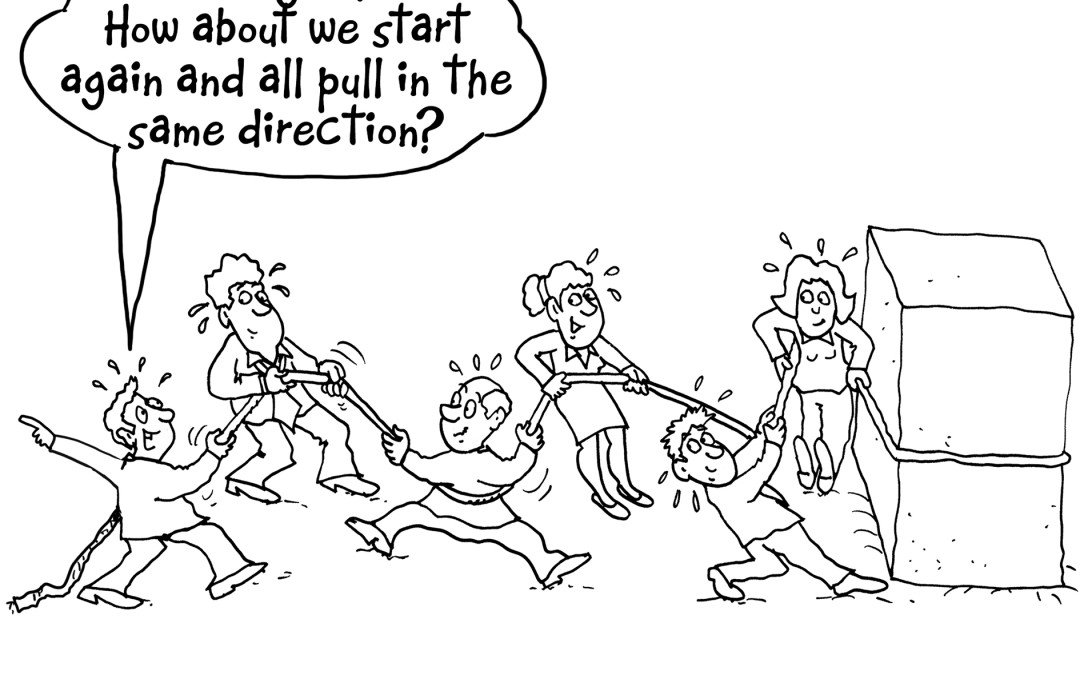
by Julia Felton | Sep 22, 2015
Your flow comes from following your natural path. Your team momentum comes from each team member following their natural path. Each frequency and each profile has a different role within the team where they can be most effective. Often the best team selection is not the person who can be most effective, but the person who enables the existing team to become more effective.
Here are the 8 profiles, and the role within the team that allows them to be in their greatest flow:
Creator: The initiator
Creators are the best initiators, and although they can be quick to create chaos, they can also be surprisingly innovative at finding ways out of chaos. Always put them in charge of new projects, but move them on to the next creation once their job is done.
Star: The promoter
Stars are the best promoters, but need to lead from the front. Give them the chance to shine, and give them the space to deliver results without tying them down. Give them the systems and support to enable them to focus on building new business.
Supporter: The leader
Supporters are the best leaders, but don’t expect them to come up with the plan. Build a plan and set the goals with a Supporter, and then let them lead the team towards the plan. Let them set their own management style, and their own agenda.
Deal Maker: The peace maker
Deal Makers are the best peacemakers, and will leave everyone feeling good. Don’t expect them to go out cold calling, as they thrive on building the relationships they have. Work with Deal Makers to nurture the customer and relationships you have.
Trader: The negotiator
Traders are your best negotiators. They will always get you the best price, in both what you buy and what you sell. They want to be given the parameters in which to work. Traders will have their ear to the ground in your market and your team.
Accumulator: The ambassador
Accumulators are your best ambassadors. They are reliable, get things done on time, and are not prone to making rash decisions. Accumulators make the best project managers, when a specific task needs to be delivered reliably.
Lord: The analyst
Lords are your best analysts. Give them the space to study the detail, and to deliver the data. Don’t ask them to go out and network, as they are strongest when focused behind the scenes.
Mechanic: The completer
Mechanics are your best completers. They will wrap up the process and find smart ways to do it better next time. Don’t ask a mechanic to start from scratch, but do give them an existing process or product to improve on.
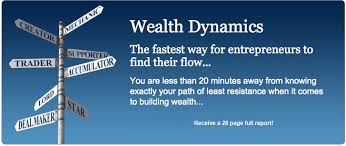
by Julia Felton | Sep 16, 2015
Have you noticed how for some people, no matter how much money they get, it just disappears? Whereas for many wealthy people, you can take all their money away and it comes right back again. This is best explained by the “Wealth Paradox”, which states:
“The more money you have, the more opportunities you have to lose it.”
Without true wealth, all the money that flows through you will disappear. So how do we define wealth? Roger James Hamilton defines wealth like this:
“Wealth isn’t how much money you have. Wealth is what you’re left with if you lose all your money.”
Wealth creators focus at chasing water upstream. Instead, they create a river of flow. There is trillions of dollars flowing around our planet every day, so you don’t need to make money, you simply need to direct it. As Roger says,
“Wealth isn’t about making money. It’s simply about good plumbing.”
We each have a natural way to create our river, and this is how the Wealth Dynamics square is formed. This becomes easier to understand when we see the wealth equation:
WEALTH = VALUE x LEVERAGE
Water always flows from high ground to low ground. Money always flows from high value to low value. Whoever values something more will be happy to pay for it, and whoever values the money more will happily take the money. Value determines the speed of money flow (the more value, the steeper the river and the faster the money will flow).
Leverage is the width of the river, and so determines the volume of money flow. If I had a widget that I sell for $100, I can double money flow by increasing value (a widget worth $200) or increasing leverage (two widgets worth $100 each). All Wealth Creators intuitively understand how to grow their river through these two variables.
Opposites of value and leverage
What few of us are taught is that there are two opposites to value and two opposites to leverage, and we are each more natural at one that the other.
Intuitive thinkers create value through innovation (create new things), while Sensory thinkers create value through good timing (trade the markets). Introverts leverage value through multiplying (making it simple and make many). Extroverts leverage value through magnifying (making it complex, and only one). These four make up the sides of our square.
The Wealth Dynamics Square

The Wealth Dynamics Square gives us the relationship between the eight Wealth Profiles. Think of it like an eight-sided mountain, where there are different rivers flowing down each side. Each of us has our own flow, which naturally links our dreams to our reality.
If’ you’d like to find out more about how I can help you accelerate your business by being in flow please register for a complimentary strategy session here.
